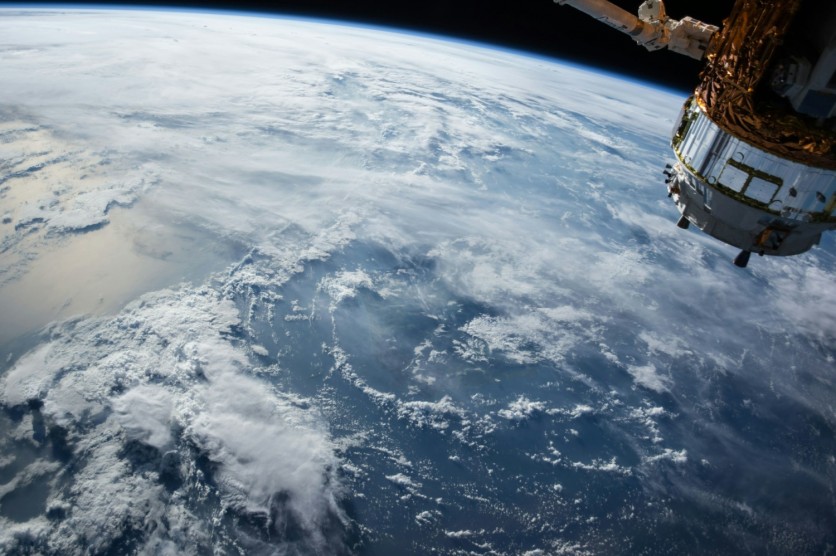US Space Command has observed that there are over 300 objects in low-Earth orbit. The space junks came from the upper stage of China's Long March 6A rocket. The accumulation of space debris has become an alarming issue, and the recent disintegration of a Chinese rocket stage has only intensified the concerns.
The AI world isn't the only realm facing resource depletion; space itself is running out of room. The recent incident involving China's Long March 6A rocket, which created over 300 new pieces of trackable debris, highlights the increasing risks posed to satellites, the International Space Station, and other vital space assets.
The Long March 6A Rocket: A Recurring Culprit in Space Debris

On Tuesday, Aug. 6, a Chinese Long March 6A rocket launched a batch of 18 Internet satellites, marking another step in the deployment of China's ambitious "Thousand Sails" satellite network. However, the mission took an unfortunate turn when the rocket's second stage disintegrated in space, creating a debris field of more than 300 pieces. This event is particularly concerning because it occurred in one of the most heavily trafficked zones of low-Earth orbit.
#USSPACECOM statement on the break-up of a Chinese Long March 6A rocket: pic.twitter.com/Kf5cz0iZky
— U.S. Space Command (@US_SpaceCom) August 8, 2024
According to Ars Technica, this isn't the first time the Long March 6A has been responsible for generating space debris. Since its debut in March 2022, this rocket has been linked to several breakup events, with one in November 2022 producing over 500 trackable objects.
These repeated incidents raise questions about the design and safety protocols of the Long March 6A, especially as China plans more launches with this rocket to build its expansive satellite network.
The Presence of Space Debris is a Global Problem
The creation of new debris fields in space is not just a problem for China-it poses a global threat. The debris from the recent Long March 6A breakup now drifts through space, potentially crossing paths with thousands of other satellites, including SpaceX's Starlink network and government spacecraft. This increases the risk of collisions, which could lead to even more debris in a dangerous chain reaction known as the Kessler Syndrome.
Space Command, the U.S. military organization responsible for tracking objects in orbit, has confirmed the presence of the new debris field. While there are currently no immediate threats, the long-term risks cannot be ignored. It will take decades, if not centuries, for the debris to naturally decay and reenter the Earth's atmosphere, during which time it will continue to pose a hazard to space operations.
China's Track Record with Space Debris
China's space program has been responsible for several major debris-generating events. The most notorious occurred in 2007 when China conducted an anti-satellite missile test that shattered one of its own spacecraft, creating more than 3,000 trackable objects and an estimated 150,000 smaller fragments. This remains one of the worst cases of space debris creation in history.
More recently, the core stages of China's Long March 5B rockets have reentered the Earth's atmosphere in an uncontrolled manner on four occasions between 2020 and 2022. These incidents sparked international concern as the falling debris could have posed a risk to people and property on the ground.
While space debris in orbit doesn't directly threaten lives on Earth, it significantly endangers the satellites and space stations that humanity relies on.
The Need for Stricter Space Debris Mitigation
The ongoing creation of space debris underscores the urgent need for stricter adherence to space debris mitigation guidelines. The international community must prioritize the development and enforcement of robust protocols to minimize the generation of new debris. This includes the passivation of rocket stages to prevent explosions, as well as improved space domain awareness capabilities to track and manage space traffic effectively.
As space becomes increasingly congested, the risks posed by debris cannot be overstated. China, along with other spacefaring nations, must take responsibility for ensuring the safety and sustainability of the space environment.
The future of global satellite networks, space exploration, and even human life in space depends on our ability to manage and mitigate the growing threat of space debris.
Read also: August Meteor Showers: Perseids, Kappa Cygnids, Alpha Aurigids-Here's When to Watch the Skies

![Apple Watch Series 10 [GPS 42mm]](https://d.techtimes.com/en/full/453899/apple-watch-series-10-gps-42mm.jpg?w=184&h=103&f=9fb3c2ea2db928c663d1d2eadbcb3e52)



